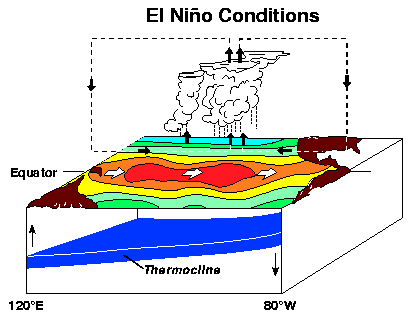What Is El Niño? Storms In California Explained, What It Means For 2016 Climate Change

Extreme weather has gripped California as one of the most intense El Niños ever hits the Pacific Ocean. Current storm conditions tied with a 1997-1998 storm as the strongest El Niño on record, according to data released by the National Oceanic and Atmospheric Administration (NOAA).
The previous strongest El Niño reached a peak sea-surface water temperature of 2.3 degrees Celsius when it formed in October 1997. Between October and December 2015, the current El Niño also hit a top temperature of 2.3 degrees Celsius. Climate change could be exacerbating weather conditions, Agence France-Presse reported.
"If you add the background global warming to natural weather phenomena, there’s a tendency to break records left and right," Herve Le Treut, a climate scientist and director of the Pierre-Simon Laplace Institute told the AFP.
The warming trend has generated heavy rains in Northern California, and could indicate extraordinary weather conditions this year around the world. Experts are anticipating higher global temperatures, severe droughts and landslides to come in other corners of the globe.
El Niños tend to happen every three to seven years, first slowly picking up steam in the summer and peaking in the winter months. The weather event means that warmer waters are pushed closer to the South and North America, instead of the Australian-Asian areas. Warm weather follows to the east, creating heavy rains, flooding and interferes with fish habitats.
Tim Stockdale, a scientist at the European Center for Medium-Range Weather Forecasts, told International Business Times that the relationship that plays out between the waves and winds ultimately determines the strength of an El Niño.
“Things in the ocean move pretty slowly and they’ve got a lot more inertia, whereas the atmosphere flips around at random,” Stockdale said. “The eventual outcome [of El Niño] will depend on the signal in the ocean, but also on the random element of what the atmosphere might do.”
v

The El Niño system formed this season has resulted in intense flooding across South America. More than 150,000 people were evacuated, according to the BBC.
Northern California may see up to 15 inches of rain over the next 16 days. Warnings have been issued across the state for residents to clear drains and exercise caution.
© Copyright IBTimes 2024. All rights reserved.






















